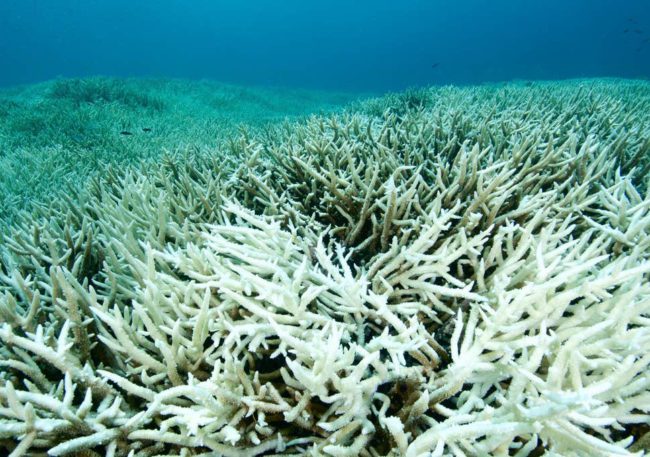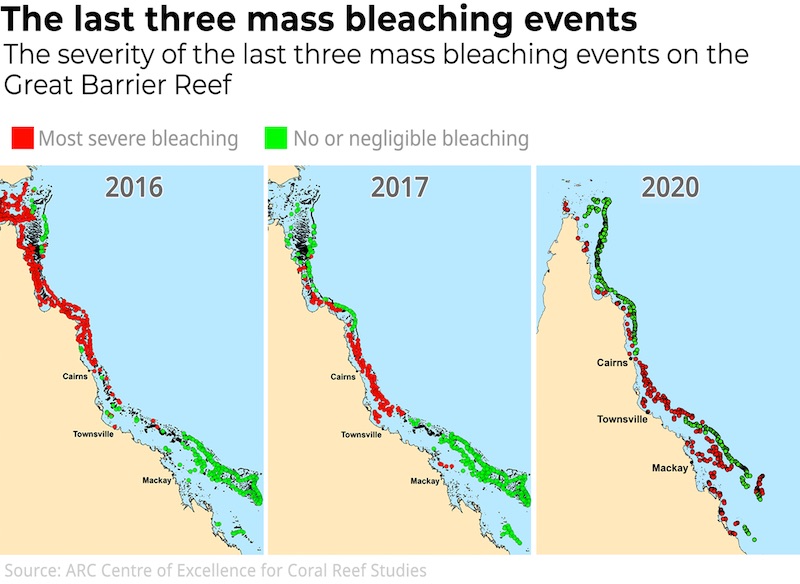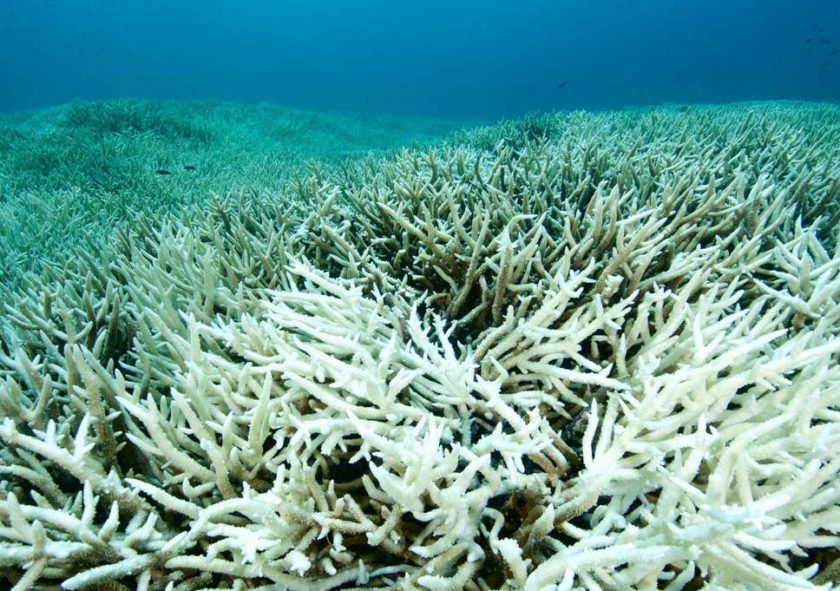
Back on March 24th I was writing about the 2020 mass bleaching that was happening to the Great Barrier Reef. At that time a survey was still underway. Now that the survey has been completed we have a clearer view of what has happened.
For the first time, severe bleaching has struck all three regions of the Great Barrier Reef – the northern, central and now large parts of the southern sectors. The north was the worst affected region in 2016, followed by the centre in 2017.
What exactly is Coral Bleaching?
Coral has a symbiotic relationship with algae-like unicellular organisms. It is specifically Zooxanthellae that give coral its coloration. When the coral comes under stress due to variations in the sea temperature that is too hot or too cold, the coral responds by ejecting their zooxanthellae, thus they turn white and so become bleached.
Key Point: The coral is still alive, but the problem is that coral needs the Zooxanthellae to get about 90% of its energy, so without this, it starves and dies.
In other words, bleaching means that it will probably die, so there will be survey later in the year to see what has actually happened.
Why does it matter?
Coral Reefs are often referred to as the Rainforests of the Ocean. This is because they hold a vast diversity of life. They might indeed be only 0.1% of the ocean area, but they are home to at least 25% of all marine species.
Latest Details of what has happened
Terry Hughes and Morgan Pratchett, Great Barrier Reef subject matter experts, have just published an article about their survey of 1,036 reefs. They conducted this from the air during the last two weeks in March.
Titled “We just spent two weeks surveying the Great Barrier Reef. What we saw was an utter tragedy“, it has been published within The Conversation on 6th April 2020.
Below are a few key insights that I’ve quote mined from it …
This year, February had the highest monthly sea surface temperatures ever recorded on the Great Barrier Reef since the Bureau of Meteorology’s records began in 1900.
We surveyed 1,036 reefs from the air during the last two weeks in March, to measure the extent and severity of coral bleaching throughout the Great Barrier Reef region. Two observers, from the ARC Centre of Excellence for Coral Reef Studies and the Great Barrier Reef Marine Park Authority, scored each reef visually, repeating the same procedures developed during early bleaching events.
The accuracy of the aerial scores is verified by underwater surveys on reefs that are lightly and heavily bleached. While underwater, we also measure how bleaching changes between shallow and deeper reefs.
… However, 25.1% of reefs were severely affected (red reefs) – that is, on each reef more than 60% of corals were bleached. A further 35% had more modest levels of bleaching….
Later this year, we’ll go underwater to assess the losses of corals during this most recent event.
… 2020 is the second-worst mass bleaching event of the five experienced by the Great Barrier Reef since 1998….
… The Great Barrier Reef will continue to lose corals from heat stress, until global emissions of greenhouse gasses are reduced to net zero, and sea temperatures stabilise. Without urgent action to achieve this outcome, it’s clear our coral reefs will not survive business-as-usual emissions…

